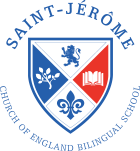Mathematics
At St Jérôme School our teaching of Mathematics is based on the programme of study set in the National Curriculum for England. You can download it here.
The National Curriculum’s three overarching aims – that all children become fluent in the fundamentals of mathematics and are thus equipped to reason mathematically and solve problems – are central to our approach to the teaching of mathematics.

We prioritise the development of children’s number sense as the foundation that will enable children to become fluent in the fundamentals of mathematics. This involves ensuring our children develop both factual and procedural fluency and conceptual understanding in tandem.
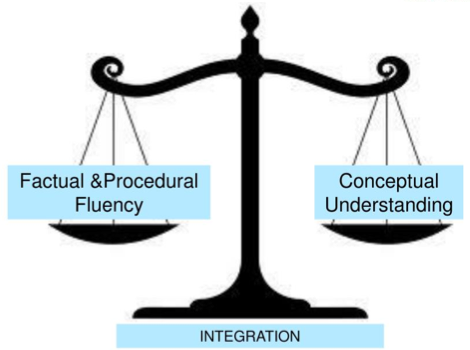
Procedural fluency refers to the rapid, accurate, flexible and efficient recall and application of facts and procedures. We aim to ensure our children will become increasingly fluent through practice within every lesson; in addition, this academic year we will be implementing weekly low stakes practice tests that will allow children to consolidate their recall of number bonds and times tables, following a progression from EYFS through to year 6.
Conceptual understanding refers to children having a knowledge of underpinning mathematical structure and relationships. Our teachers give careful thought to the concrete and pictorial representations, as well as the precise mathematical language that will allow our children to deepen their knowledge and understanding of abstract concepts (see below).
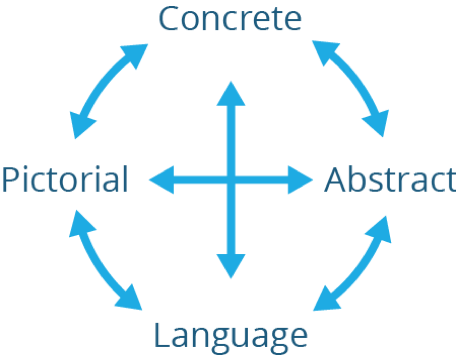
We aim to develop our children’s ability to move fluently between different representations of mathematical ideas and thus will increasingly see mathematics as an interconnected subject.
For example, children will develop a depth of understanding of the number 12 through moving between the following, along with other, representations:
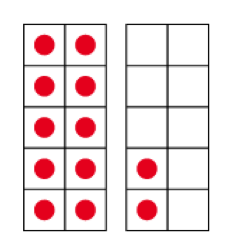 |
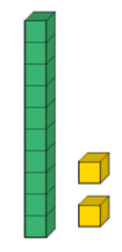 |
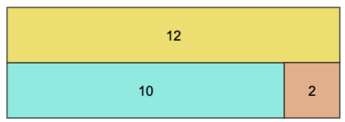 |
 |
Representations are displayed on working walls for children
to continually refer back to throughout each unit of work.
Key vocabulary is routinely shared with children and displayed on working walls within the lesson. Stem sentences are utilised to support children’s own use of language and to reinforce their understanding of mathematical structure and relationships. For example:
If the whole is divided into ( ) equal parts, then each part is ( ) of the whole.
Opportunities for children to reason and problem solve are present in every lesson. Throughout lessons, teachers facilitate mathematical discussions with pupils, encouraging them to follow lines of enquiry, conjecture relationships and generalisations, and develop arguments, justification or proof using mathematical language as appropriate for the year group. When working in their books, children are encouraged to record their thinking process, as well as their solutions, through jottings, diagrams and words.
Depth and Challenge
Our teaching provides all children with the opportunity to develop a deep understanding of mathematical concepts. Those who grasp concepts rapidly are challenged through being offered rich and sophisticated problems before any acceleration through new content. This takes the form of the ‘now think really hard’ task provided within every lesson. Children may be selected for supplementary enrichment opportunities including the First Mathematics Challenge, Primary Mathematics Challenge, and the Count on Us Primary Maths Challenge.
Assessment
First and foremost, ongoing formative assessment takes place throughout the course of each lesson as teachers check for understanding, address misconceptions and provide feedback to pupils in the moment. Students’ books are marked in accordance with our marking and feedback policy. Children’s attainment and progress over longer periods of time will be assessed through end of unit progress checks.
Long-term Plans
We follow the White Rose Maths schemes of learning. In addition to the White Rose materials we draw on a range of high quality resources to support our lesson planning, including the NCETM Primary Mastery Professional Development materials and hard copies of Singaporean textbooks.
For further details on what is taught please click the link for the relevant year group. Details of the Mathematics taught in Reception can be found on the EYFS page.
Please note that these long-term plans are a guide and that teachers, from time to time, will use their professional judgement to move more quickly through the curriculum or to spend more time consolidating a concept.
Year 1 long-term plan
Year 2 long-term plan
Year 3 long-term plan
Year 4 long-term plan
Year 5 long-term plan
Year 6 long term plan
If you would like to find out more about Mathematics at St Jérôme School please do not hesitate to contact us.
